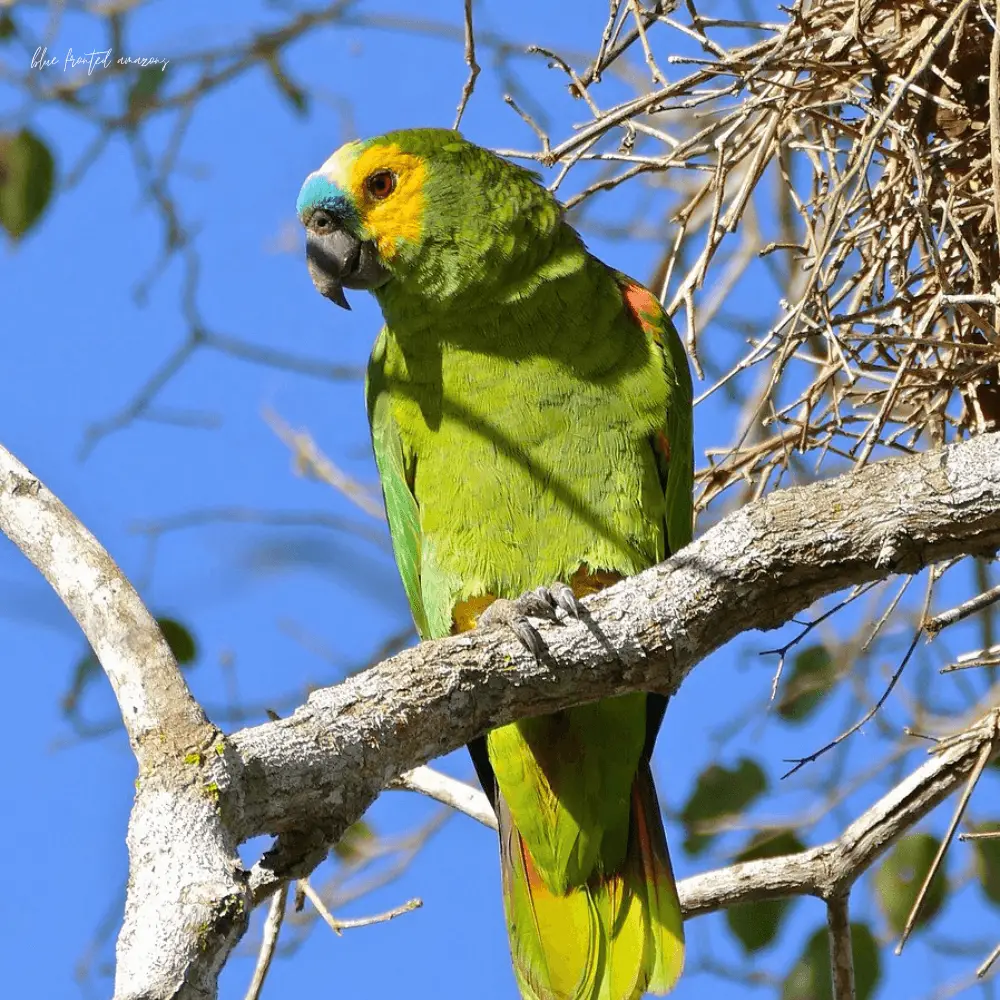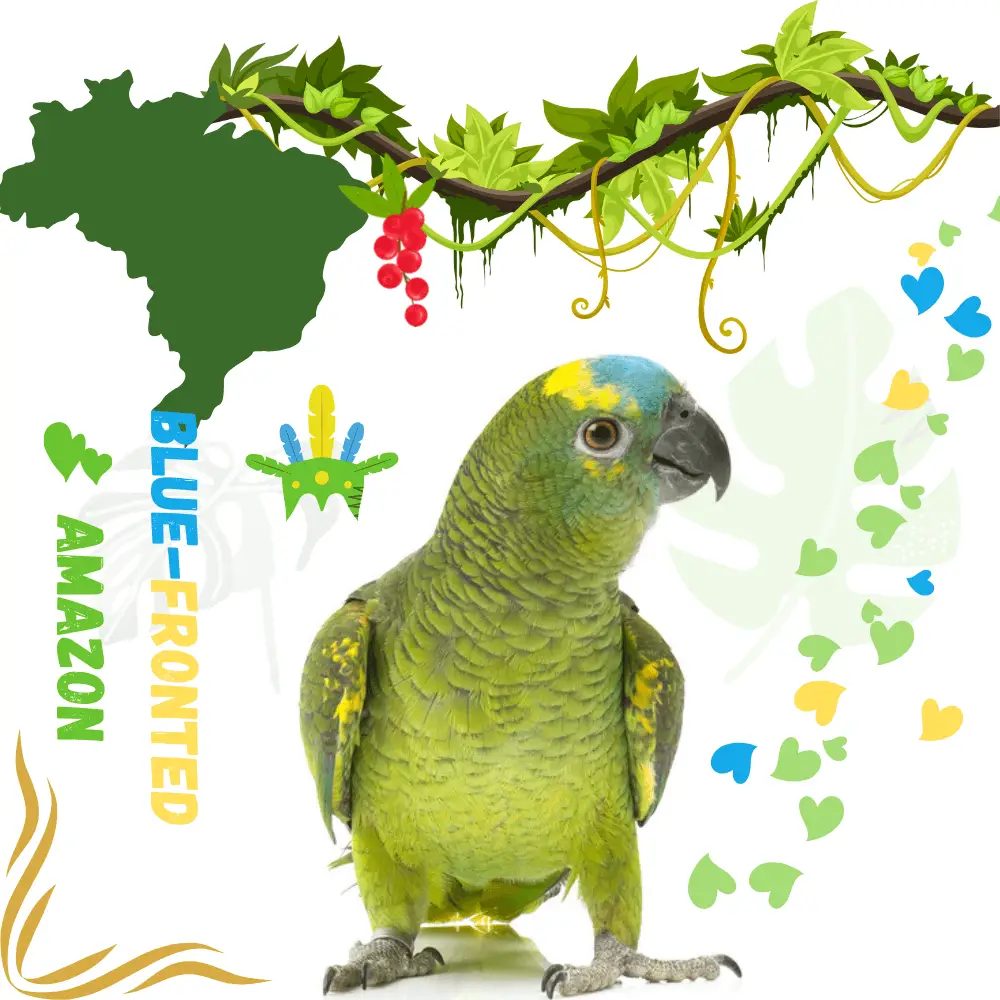The blue-fronted amazon is a stocky parrot, with green plumage, showing some yellow flashes. Very sociable, he is quickly at ease with people who are unknown to him. Very curious and playful, the blue-fronted Amazon is very popular in Europe but also in its country of origin, Brazil, where it is one of the highest amazon parrot species.
The Paraguayan blue-fronted amazon (Amazona Aestiva Xanthopteryx) is an identical species with a blue front, the only difference being that the yellow-red of the shoulders, and the yellow and the blue of the face are more marked. This species lives in Paraguay and Brazil: its habits are identical. Only a knowledgeable expert can distinguish it from the classic blue-fronted amazon.
- Origin: Brazil
- Scientific name: Amazona Aestiva
- Class: Aves
- Order: Psittaciformes
- Family: Psittacidae
- Genre: Amazona
- IUCN Conservation Status: Near Threatened (NT)
- CITES: Appendix II
- Appearance / Colours: Green with bursts of yellow. The area around the eyes is yellow and the forehead pale blue. Its beak is dark gray and its legs are dark.
- Eyes: The eyes are surrounded by light skin, with dark orange-rimmed irises.
- Size: 36cm
- Weight: 280 to 510g
- Sexual dimorphism: Non-existent
Blue-fronted amazon behavior
She is extremely sociable, adapts easily, and has a good relationship with humans. Well trained, she quickly learns to speak very well and to do exercises of address.
Blue fronted amazon facts

Originally from Brazil, the Blue-fronted Parrot lives in all types of water-rich environments, in general, it does not disdain inhabited or even cultivated regions, because it especially likes corn. It builds its nest in the cavities of large trees and reuses it for years.
What do blue fronted amazon parrots eat
It feeds mainly on seeds and fruits.
Blue-fronted Amazon health
The Blue-fronted Amazon can be affected by different diseases, the best known of which are:
- Rhinitis is caused by significant temperature differences and air currents that promote inflammation of the wax and nasal mucosa. When not treated in time, rhinitis can turn into tracheobronchitis or intense abdominal pneumonia.
- Chlamydiosis is a virus transmissible between birds mainly by the respiratory route and sometimes by the digestive route. Pathology develops due to poor hygiene or stress.
- Aspergillosis is a mycosis triggered following a drop in immunity or antibiotic treatment by penetrating through the respiratory tract in the form of spores. Symptoms are diarrhea, sudden depression, and weight loss.
- Candidiasis is a mycosis in the same way as aspergillosis but this time attacks the digestive system. The infected parrot is not very active, remains in a ball, and loses weight following a refusal to feed. In some cases, we can observe deformations of the beak, or even more rarely neurological problems.
Blue fronted amazon breeding

In the wild, the female lays 2 to 5 eggs only once a year, which she incubates for about 25 days, and it is not uncommon to see up to 4 or 5 chicks survive. Newborns are able to leave the nest as early as 9 weeks. But they will only be truly independent 8 weeks later.
In captivity, it breeds fairly easily in spacious aviaries, with appropriate care. The results obtained today suggest that this is one of the easiest species to raise.

